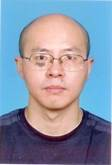
李新奇 教授
办公地址: 天津大学北洋园校区 32 教 143
电子邮箱: xinqi.li@tju.edu.cn
专业方向: 凝聚态物理;量子输运、量子测量;量子物理和量子信息
通讯地址: 天津市津南区雅观路 135 号天津大学北洋园校区 32 教 143
邮政编码: 300350
个人简历
教育背景 :
1984 年 9 月 至 1989 年 7 月:华东师范大学物理系,获学士学位
1989 年 9 月 至 1992 年 7 月:复旦大学物理系,获硕士学位
1992 年 9 月 至 1995 年 7 月:中科院理论物理研究所,获博士学位
工作经历 :
1995 年 11 月 至 1996 年 11 月:比利时 Antewerp 大学,博士后
1997 年 1 月 至 1999 年 7 月:日本东京大学,博士后
1999 年 8 月 至 2001 年 7 月:香港科技大学,博士后
2001 年 8 月 至 2008 年 7 月:中科院半导体研究所,研究员,博士生导师
2009 年 8 月 至 2017 年 7 月:北京师范大学物理系,教授,博士生导
2017 年 8 月 至今天:天津大学理学院量子交叉研究中心,教授,博士生导师
主要获奖 :
2001 年:中科院“百人计划”学者
2004 年:国家基金委“杰出青年基金”获得者
2009 年:“国家自然科学二等奖”获得者(排名 3/4 )
研究兴趣、代表性论文
研究兴趣主要包括量子输运、量子测量、以及量子信息和量子计算。在物理学核心刊物发表论文100 余篇,取得了若干有价值的成果:( 1 )在介观霍尔系统中研究了非均匀磁场下的输运性质 , 相关理论得到了有成效的应用;( 2 )利用晶格驰豫理论研究了量子点中光跃迁谱线宽度、以及量子点中热载流子的能量驰豫,对声子瓶颈效应提出了独特见解;( 3 )将介观物理理论应用于分子系统中的电荷转移与输运问题,得到了受同行广泛认可的结果;( 4 )系统研究了固态量子计算中的量子测量、量子控制问题,发展了粒子数相关的条件主方程以及超导量子电路系统中的量子贝叶斯测量理论,并应用于相关的实际问题。
近期论文和代表性论文 :
[1] Luting Xu and Xin-Qi Li, "Nonlocality of Majorana zero modes and teleportation: Self-consistent treatment based on the Bogoliubov–de Gennes equation" , Phys. Rev. B 101, 205401 (2020)
[2] Luting Xu and Xin-Qi Li, "Quantum transfer through a continuum under continuous monitoring" , Phys. Rev. A 101, 042122 (2020)
[3] Cheng Zhang, Kai Zhou, Wei Feng, and Xin-Qi Li: “ Estimation of parameters in circuit QED by continuous quantum measurement ”, Phys. Rev. A 99, 022114 (2019).
[4] Wei Feng, Cheng Zhang, Zhong Wang, Lupei Qin, and Xin-Qi Li: “Gradual partial-collapse theory for ideal nondemolition measurements of qubits in circuit QED ”, Phys. Rev. A 98, 022121 (2018).
[5] Lupei Qin, Luting Xu, Wei Feng, and Xin-Qi Li: “Qubit state tomography in superconducting circuit via weak measurements ”, New J. Phys. 19, 033036 (2017).
[6] Wei Feng, Pengfei Liang, Lupei Qin, and Xin-Qi Li: “ Exact quantum Bayesian rule for qubit m easurements in circuit QED ”, Scientific Reports 6, 20492 (2016).
[7] Lupei Qin, Pengfei Liang, and Xin-Qi Li: “ Weak values in continuous weak measurement of qubits ”, Phys. Rev. A 92, 012119 (2015).
[8] Peiyue Wang, Lupei Qin, and Xin-Qi Li: “ Quantum Bayesian rule for weak measurements of qubits in superconducting circuit QED ”, New J. Phys. 16, 123047 (2014).
[9] Yunshan Cao, Peiyue Wang, Gang Xiong, Ming Gong, and Xin-Qi Li: “Probing the existence and dynamics of Majorana fermion via transport through a quantum dot”, Phys. Rev. B 86, 115311 (2012).
[10] HuJun Jiao, Feng Li, Shi-Kuan Wang, and Xin-Qi Li: “ Weak Measurement of Qubit Oscillations with Strong Response Detectors: Violation of the Fundamental Bound Imposed on Linear Detectors ”, Phys. Rev. B 79, 075320 (2009).
[11] Xin-Qi Li, Ping Cui and YiJing Yan: “ Spontaneous Relaxation of a Charge Qubit under Electrical Measurement ”, Phys. Rev. Lett. 94, 066803 (2005).
[12] Xin-Qi Li, Wen-Kai Zhang, Ping Cui, Jiushu Shao, Zhongshui Ma, and YiJing Yan: “ Quantum measurement of a solid-state qubit: A unified quantum master equation approach ”, Phys. Rev. B 69, 085315 (2004)
[13] LiXiang Cen, Xin-Qi Li, YiJing Yan, HouZhi Zheng, and ShunJin Wang: Evaluation of holonomic quantum computation: adiabatic versus nonadiabatic , Phys. Rev. Lett. 90 , 147902 (2003).
[14] Xin-Qi Li and YiJing Yan: Quantum computation with coupled quantum dots embedded in optical microcavities , Phys. Rev. B 65 , 205301(2002).
[15] Xin-Qi Li and Yijing Yan: Electrical transport through individual DNA molecules , Appl. Phys. Lett. 79 , 2190 (2001)
[16] Xin-Qi Li and Yijing Yan: Scattering matrix approach to electronic dephasing in long-range electron transfer phenomena , J. Chem. Phys. 115 , 4169 (2001).
[17] Xin-Qi Li and Y. Arakawa: Optical linewidths in an individual quantum dot , Phys. Rev. B 60 , 1915 (1999).
[18] Xin-Qi Li, Hajime Nakayama and Y. Arakawa: Phonon bottleneck in quantum dots: Role of finite lifetime of the confined optical phonons , Phys. Rev. B 59 , 5069 (1999).
[19] Xin-Qi Li and Yasuhiko Arakawa: Ultrafast Energy Relaxation in Quantum Dots through Defect States: A Lattice Relaxation Approach , Phys. Rev. B 56 , 10423 (1997).
[20] F. M. Peeters and X. Q. Li: Hall Magnetometer in the Ballistic Regime , Appl. Phys. Lett. 72 , 572 (1998).
[21] Xin-Qi Li, F. M. Peeters and A. K. Geim: " Scattering on Circular Inhomogeneous Magnetic Field Profiles in Electron Waveguide Junctions ", Superlatt. and Microstruct. 22 , 243 (1997).
[22] A.K. Geim, S.V. Dubonos, I.V. Grigorieva, J.G.S. Lok, J.C. Maan, X.Q. Li, F.M. Peeters and Yu.V. Nazarov: " Precision Magnetometry on a Submicron Scale: Magnetisation of Superconducting Quantum Dots ", Superlatt. and Microstruct. 23 , 151 (1998).
[23] A.K. Geim, J.G.S. Lok, J.C. Maan, S.V. Dubonos, X.Q. Li, F.M. Peeters and Yu.V. Nazarov: " Precision Magnetometry on a Nanometer Scale ", in Proceedings of the 23rd International Conference on Physics of Semiconductors, edited by M. Scheffler and R. Zimmermann (World Scientific, Singapore, 1996), pp. 3311-14.
来源:天津大学量子交叉研究中心
